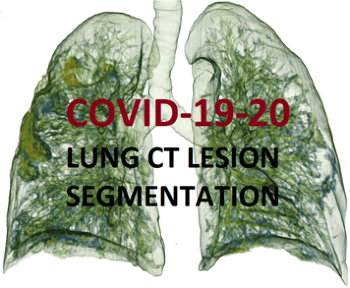Imaging Phenotypes of COVID-19
Need:
The COVID-19 pandemic has had a devastating impact on the health of individuals worldwide. The manifestation of the viral infection in the lung has been one of the earliest indicators of disease and may play an important role in the clinical management of patients.

Though children were initially thought to be less susceptible to infection, they make up to 11.3% of COVID-19 infections; however, less than 2% of the literature on SARS-CoV-2 has focused on pediatrics. For children and adults, artificial intelligence (AI) approaches based on machine learning can comprehensively analyze complex imaging and clinical parameters to improve the clinical management of these patients.
Solution:
Our team at Children’s National Hospital published in Pediatric Pulmonology the first comprehensive review of the common patterns in the lungs of pediatric patients presenting COVID-19 symptoms, which are distinct from the signs of other viral respiratory infections in children. We also provided insight into the differences between children and adults with COVID-19.
Children’s National Hospital is the first pediatric partner to join an international initiative composed of 20 leading hospitals from around the globe and led by leading technology firm NVIDIA and Massachusetts General Brigham Hospital. This collaboration focuses on creating solutions through machine and deep learning to benefit COVID-19 healthcare outcomes through the largest and most diverse federated learning enterprise. The model determines whether a patient demonstrating COVID-19 symptoms in an emergency room would require supplemental oxygen hours — even days — after the initial exam and applies to patients of all demographics.
Children’s National Hospital, NVIDIA AI and the National Institutes of Health (NIH) have also partnered to identify better methods for assessing COVID-19 severity in the lungs through AI. The COVID-19-20 Grand Challenge and global competition (https://covid-segmentation.grand-challenge.org/COVID-19-20/) has attracted over 1,000 participants worldwide and utilizes an NIH dataset that is multi-institutional and multinational, originating from patients of different ages, genders and with variable disease severity.
Impact:
Though children were initially thought to be less susceptible to infection, the data has made it clear that many children are at high risk for hospitalization and severe health complications. Although there are similarities between how children and adults are affected by the pandemic, there are also critical differences. Through the use of AI algorithms, our imaging models help clinicians better measure and understand the severity of COVID-19 infection, ultimately leading to more timely and appropriate medical interventions.
Partners:
- Division of Diagnostic Imaging and Radiology at Children's National Hospital
- Division of Pulmonary Medicine at Children's National Hospital
- Children’s Hospital Los Angeles
- Children’s Hospital Colorado
- NVIDIA
- NIH
